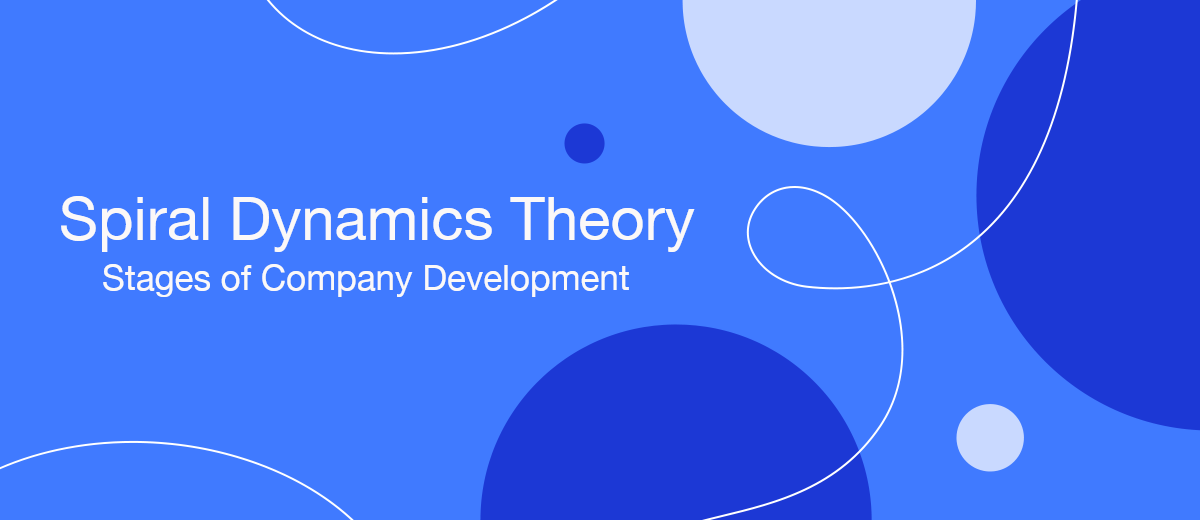The ideologist of the theory of spiral dynamics is the American psychologist Claire Graves. The specialist developed the concept of vertical human evolution, which can also be projected onto business. The spiral dynamics of development suggests that each level is characterized by its own set of values and principles. Evolutionary advancement is only possible step by step through all the stages.
In this article, we will look at how spiral dynamics are reflected in business. How a company develops, transforms and mentally transforms. Take a few minutes to read this material and you will be able to classify your business or organization within Graves' theory of spiral dynamics.
Beige level

The initial stage of development of any company or organization is the beige level. This stage is often associated with survival or early development.
Features and values of beige-level companies:
- search for your niche;
- attraction of investments;
- striving for a break-even point;
- adaptation to market conditions.
Beige organizations are companies that are trying to get on the business board and stay on it. Naturally, at this stage, you can declare a special mission, a unique product and demonstrate ambition. But all this is more aimed at attracting attention, funding and maintaining an atmosphere of confidence in a “bright future”. The main task of the beige stage is to stay afloat. All other organizational and moral nuances fade into the background.
Purple level

The transition to the next stage according to the theory of spiral dynamics is possible only after the full exhaustion and development of the current stage. When survival is no longer the main goal, and the company has chosen a niche and acquired initial capital, the purple level begins.
Features and values of purple organizations:
- emergence of structure;
- “family” communication of employees;
- the emergence of traditions and common purpose;
- stabilization of positions in the market.
The purple level is often referred to as clan or tribal. Companies at this stage are not large-scale and do not pretend to a sharp growth. These are family businesses, “friendly” start-ups and organizations that build close relationships between employees. Purple companies often work in an atmosphere of trust, there are no hard limits or penalties. The nominal boss tries to enter into the position of subordinates and feels responsible for them, and employees often ignore their personal ambitions and work for the benefit of the entire enterprise.
When and if the company moves to the next stage, then for a fairly large number of employees it becomes a difficult test. Many do not pass it, and those who continue to move on within the organization remember the purple “family” stage for a long time with nostalgia.
Red level

One of the basic ideas of the Spiral Dynamics concept is the shift in emphasis from the individual to the collective and vice versa. The purple stage of the “friendly” atmosphere is quite comfortable, but it has clear growth limits. Many family businesses organically settle into their niche, build some structure and feel good at the purple level. But if the business owner has a keen desire to expand, then the turn of the red stage of the company's development comes.
Features and values of red organizations:
- focus on results and superiority over competitors;
- focus on expanding markets and increasing resources;
- the emergence of a strict hierarchy and leader.
The red level is strength and aggression. The focus is on dominance in its segment and the race to improve performance. It is at this stage that fiery speeches in the style of “we must become the best of all” and “let's do it at any cost” appear. The red stage is often the necessary momentum for a company to move to a new level of scale and profitability. However, this stage also has a significant negative side. Not all employees can fit such an aggressive work environment and insistent demand to “leave the comfort zone forever”.
It is quite difficult to exist in constant tension and struggle. In addition, the "red" goals of dominance are not obeyed by all companies. When the obsession with fighting and collecting resources disappears, the turn of the next stage comes — blue.
Blue level

The desire to conquer the market and win over competitors often borders on chaotic impulsive decisions and betting on a “short game”, when the task is to achieve results in the shortest possible time. If the company overcomes the red stage, the turn of the blue level comes.
Features and values of blue organizations:
- careful planning;
- creating clear rules and introducing new standards;
- monitoring the actions of employees;
- optimization of work processes.
The company's development strategy in the blue spectrum is the creation of a system and the organization of a transparent structure. Each employee understands his tasks, functions and the level of his contribution to the common cause. The blue organization is a tuned mechanism that brings stable results and is resistant to various destructive factors. Such companies exist in an atmosphere of discipline and order.
Orange level

The blue stage of the company's development can be considered a completely successful evolutionary outcome for the business. However, it also has its limit and dark side in the face of the growing bureaucracy within the organization. When a business is mentally ready to move on and it becomes crowded within the framework of strict rules and obligations, then it moves into the orange stage.
Features and values of orange companies:
- striving for progress;
- the emergence of a strategy and philosophy of success;
- mastering new tools and opportunities;
- each employee can realize his ambitions.
In orange companies, the intelligence and creativity of employees, their ability to improve the quality and results of business processes come to the fore. This stage is characterized by the growth of the main metrics in parallel with the development of key employees. In orange organizations, a quick career leap for a specialist is possible due to self-development, creative moves and positive business results.
The orange level is success, money and self-realization. At this stage, the company is able to scale relatively easily, develop new markets, attract additional resources, go public, etc.
Levels of Being

After the orange stage in the theory of spiral dynamics, the so-called levels of being begin. These stages do not quite fit into the classical picture of the perception of business, because they suggest a relegation to the background of material values. For an individual, the green level, which follows the orange one, means self-examination, a revision of the value system, the search for harmony with the world, and a decrease in the level of egoism.
Green companies are focused on interaction with the environment, they strive to make their contribution to the order of the world. At this stage, the organization's mission and global goals are formed, and the high qualification of employees contributes to a decrease in the verticalization of the structure and the development of horizontal ties. A company in the green stage loses its clear outlines of a business machine for developing markets and making money. Such organizations have social influence, meaning of existence and purpose.
Following the green is the yellow level. At this stage, the emphasis on individuality returns and the integration of all previous stages of development takes place. The yellow level is a kind of freedom and the ability to effectively apply the accumulated experience in other color spaces. Such companies expand their field of activity, generate and implement new ideas, and continue to study society and the structure of the world. But this happens at a completely different level of understanding.
The yellow stage is replaced by turquoise. Now many companies are trying to “paint” themselves in just such a trendy shade. This is the stage of emergence of evolutionary purpose, harmony, self-organization and integrity.
At what level is your company
Graves' theory of spiral dynamics is not an absolute for assessing an organization. Nevertheless, this concept is quite interesting and practical. Each company goes through its own evolutionary path, which can be divided into specific stages. Spiral Dynamics helps organize and visualize this movement.
It is likely that many managers and employees will be able to see the features of their organization in the described stages. Understanding your own point of development often contributes to moving forward. A clear outline of the evolutionary path helps to define goals and develop mechanics to achieve them.
You probably know that the speed of leads processing directly affects the conversion and customer loyalty. Do you want to receive real-time information about new orders from Facebook and Instagram in order to respond to them as quickly as possible? Use the SaveMyLeads online connector. Link your Facebook advertising account to the messenger so that employees receive notifications about new leads. Create an integration with the SMS service so that a welcome message is sent to each new customer. Adding leads to a CRM system, contacts to mailing lists, tasks to project management programs – all this and much more can be automated using SaveMyLeads. Set up integrations, get rid of routine operations and focus on the really important tasks.
